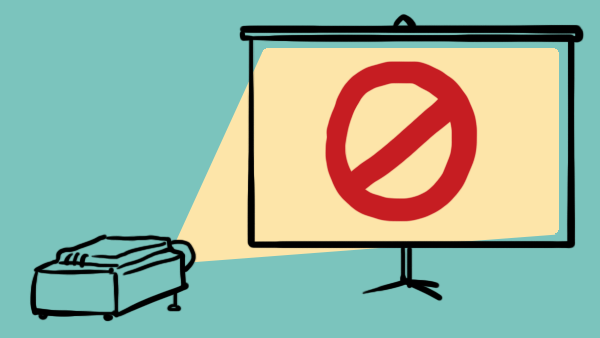How to Finally Move on from Slide Presentations

For Better Meetings, Ditch Boring Presentations
Are you still driving the same car you drove in 1987? Your answer is likely no, and your reasons are probably numerous: That car’s inefficient by 2019 standards it’s broken down; it’s just plain ugly!
But there’s something else that’s been around since 1987 that you’re either using or seeing on a regular basis: Microsoft PowerPoint.
And it has a lot of the same problems as that ’87 Nova. The presentation software is so outdated and overused that the term “Death by PowerPoint” was coined by Swedish author David JP Phillips, spurring a wildly popular TED Talk and spearheading a PowerPoint overhaul.
Phillips’ approach focused on making the actual slide presentation experience better—tips to streamline presentations and add visual interest to the content. But the fact is that presentations are a linear, somewhat static, often redundant way to share information. And according to recent research by Harvard University, those characteristics can have a devastating effect on your audience’s retention or damage your brand reputation (something we have been talking about since 2012).
Luckily, you don’t have to click through slides to make a presentation.
There are plenty of options out there to engage and excite an audience about your ideas. Whether your goal is to get attention or to gain retention, there is a Presentation alternative for you.
Try a narrative memo to make your message memorable.
This method gained notoriety due to Jeff Bezos’s ban on PowerPoint, which he highlighted in his 2018 annual letter. Rather than relying upon slides cluttered with bullet points, Bezos requires that Amazon execs compose a compelling narrative, spanning about 6 pages, in a narrative structure. Everyone in the meeting is given ample time to read the narrative—then they discuss the topic.
According to Bezos, this works because even though data can be hugely helpful to assist in decision making, anecdotes and storytelling can be equally insightful. Plus, narrative content is more aligned with how people actually think.
Use a more dynamic presentation app to help your audience better visualize your information.
One major presentation pain point is this: the visuals are either boring clip art or too time-consuming to find, format, and fine-tune. Plus, if you want to present data or hefty amounts of info, you’re probably going to need slide after slide of charts and graphs- a great way to get your audience’s eyes to glaze over; not so great for getting them to hone in on your ideas.
Luckily, there’s an app for that. Alternative presentation apps can be a simple and slick way to create rich visual presentations without painstaking slide creation. Some even include mobile interfaces for collaboration on the fly, animation options, or integrated stock photography.
Bring a video instead of a slide presentation to increase retention.
According to John Medina, a developmental molecular biologist studying human brain development, vision is the most important of all senses. Medina argues that the text-heavy presentation format is inefficient and ineffective; visual storytelling is the best way to promote retention.
In Medina’s words: “We are incredible at remembering pictures. Hear a piece of information, and three days later you’ll remember 10 percent of it. Add a picture and you’ll remember 65 percent.”
His advice is to get rid of all your slide presentations and start fresh with minimal text. Ours is to skip the slides altogether and stick to visual storytelling via video- choose an explainer or a multimedia video that makes for a better presentation with the added bonus of living on as engaging content after the fact—unlike slide show, a video isn’t dependent upon a presenter talking through its content, yet can stop and start along with the conversation in a meeting.
If you want your meeting to be remembered, give graphic facilitation a go.
Graphic recording or graphic facilitation involves a trained artist capturing your ideas as they come, using a visual language to create a literal big picture that encompasses everything that is presented or discussed. Researchers say that this approach can be far more effective than traditional presentation methods.
Meeting attendees are creatively stimulated and feel more invested in the meeting itself; by nature, graphic facilitation is engaging and participatory. The resulting images can then be transformed into print or digital takeaways, further boosting retention.
Don’t fall victim to “Death by PowerPoint!” Instead, use these tips to breathe new life into your meetings with engaging, memorable, and visually compelling presentations that are as enjoyable to create as they are to experience.
